#pottery detail
Text
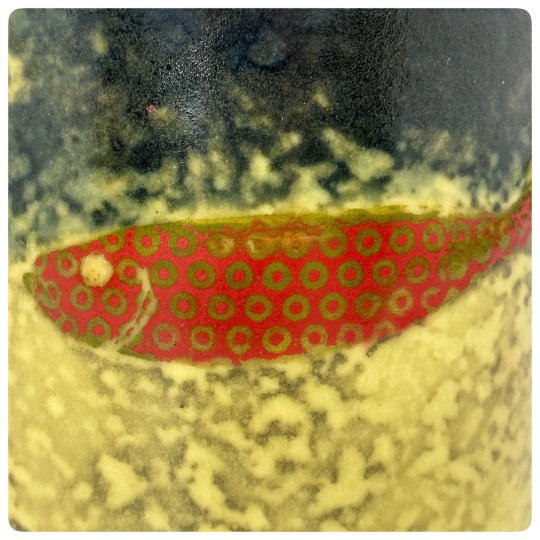
Vase Pottery Detail, by Bruce Gholson- Bulldog Pottery
9 notes
·
View notes
Text
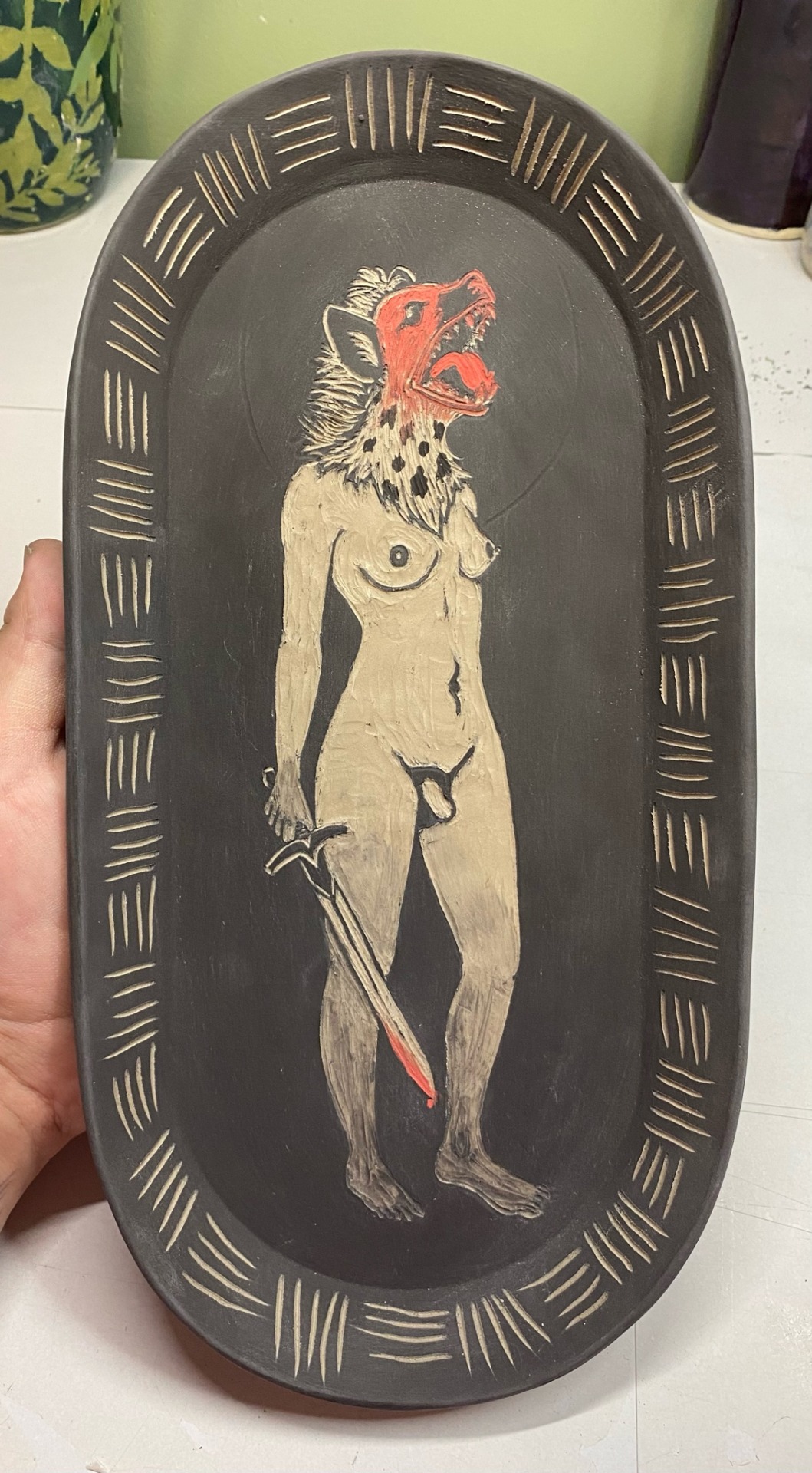
reserved
my wrathful hyena woman, but without her usual companions
#really enjoying changing little details in this design#pottery#ceramics#ceramic#ceramic art#sgraffito#carving#underglaze painting#hyena woman#trans pride#trans rage#trans wrath#trans#queer#queer art#trans art#sword#blood
2K notes
·
View notes
Text

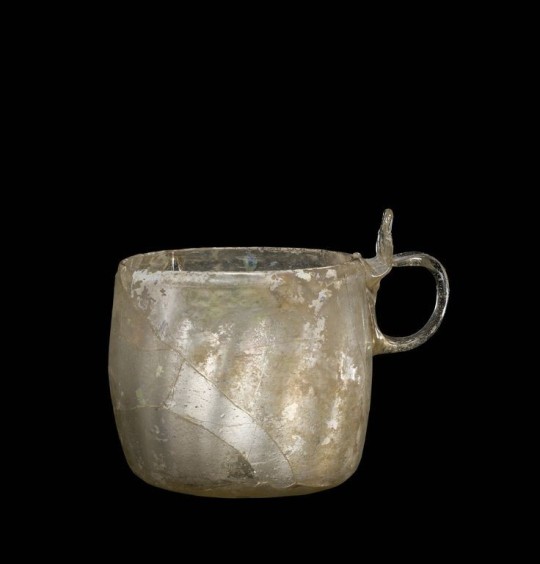



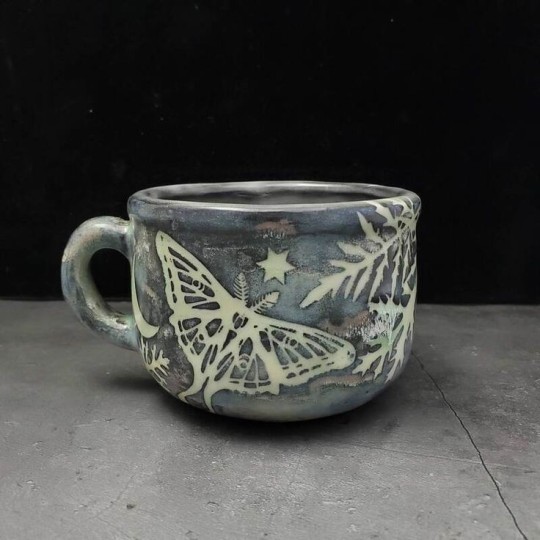
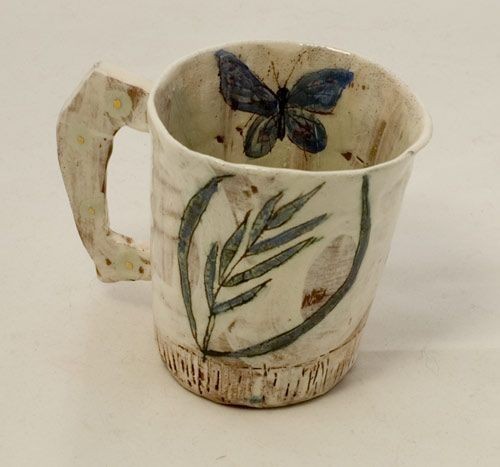
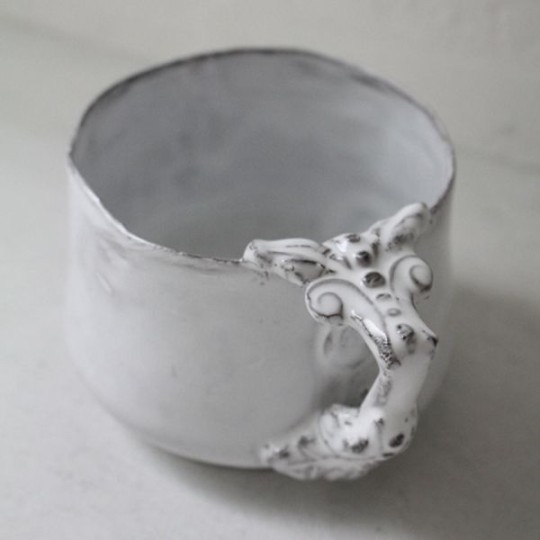
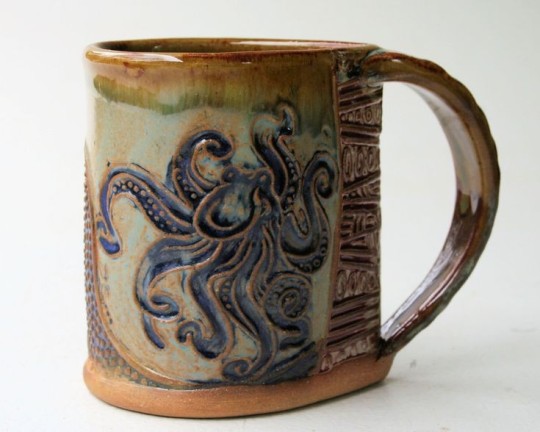
913 notes
·
View notes
Text


Little frogs and their little duck friend 🌱
#I think we’ll have a shop update this weekend!#haven’t figured out the details yet but I’ll keep you guys updated#artists on tumblr#ceramics#clay#pottery#art#cute ceramics#clay art#handmade#ceramic art#stoneware#frog#frogs#frog art#duck#duck art
63 notes
·
View notes
Text

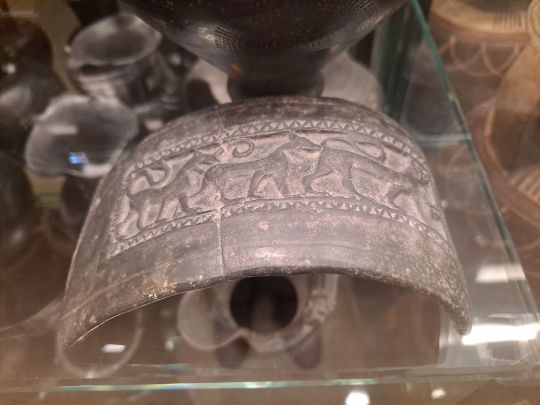
Etruscan bucchero pottery
6th century BCE
Medelhavsmuseet, Stockholm
Stockholm, November 2023
#Etruscan#pottery#6th century BCE#bucchero#ancient#art#detail#Medelhavsmuseet#Swedish Museums#my photo
86 notes
·
View notes
Text
DUSK WARDEN


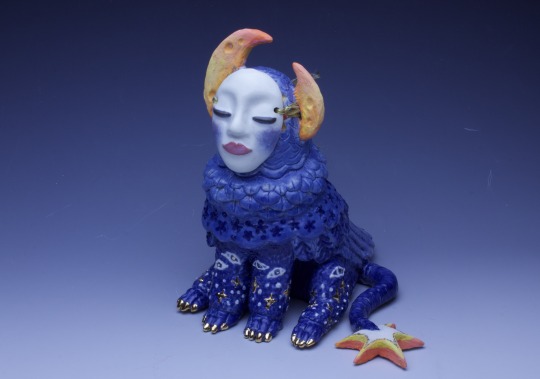
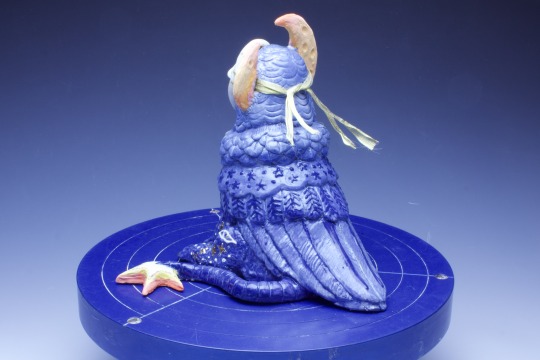
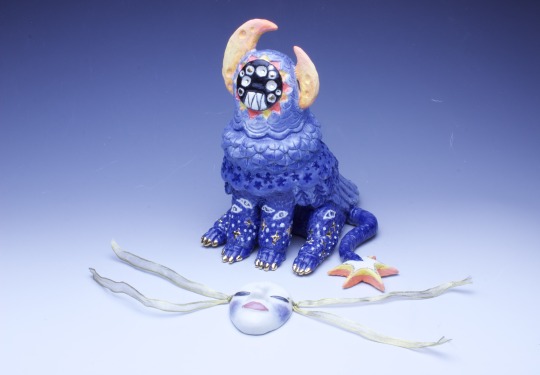

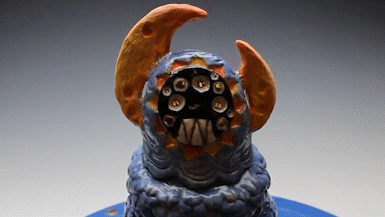
Im super proud of how this piece came out, especially as it's my first ever sculpture!
The concept is as follows: The dusk warden is a gentle protector, but it's face is off-putting so it wears a mask so as not to scare anyone. Despite this, the true face is far more interesting, and mask or no mask the creature has just as sweet a personality!



#eyenaku#pottery#dusk warden#art#sculpture#guys please interact with this i'm so so proud of it#it has gold luster on the nails + star details + pupils#also the eyes follow you!! it's not too good on camera it's much better irl#also i'm gonna be making a companion piece next quarter: the dawn beast!!#my art#my design#own design#also the crescent moon horns + tail are matte :3 details!!#i think the gold on the eyes made them super intense and striking which really fits what i was going for!!#also my guy has two masks!!#idk which i like better to be honest#they both fit for different reasons#proudnaku#celestial wards
616 notes
·
View notes
Text
given i had a fever and was often shaking uncontrollably the entire time, I think I did a really good job on this plant pot...
it has a built-in drip catcher, complete with an aquatic snail and a little frog to enjoy the run-off :)


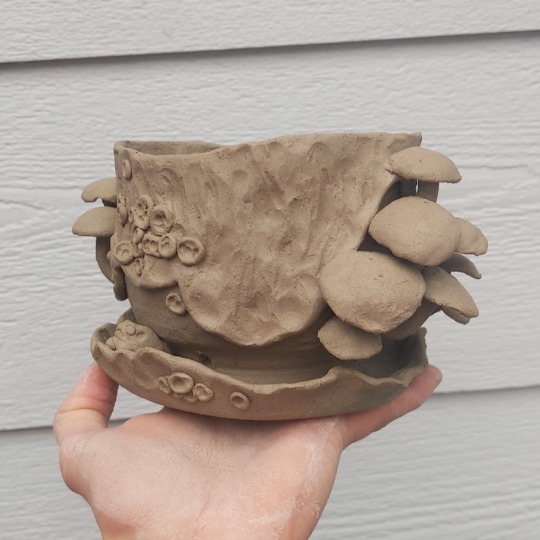
#it seems to be a weird cold#after several negative covid tests#detailing this one took me abt 5 hours across last night and today#i threw this on the wheel and then altered it + added texture and embellishments#pottery#ceramics#frogs#fungi#mushrooms#my posts#this shit's mad whimsical
66 notes
·
View notes
Text
My hands be shaking like crazy
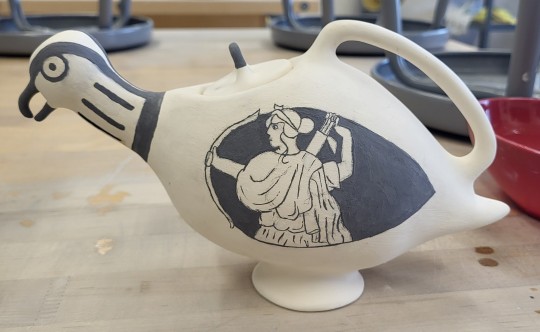
#art#greek mythology#pottery#artemis and apollo#artemis#teapot#greek pottery#greek replica#replica#ancient pottery#quail pottery#quail#glazing pottery#detail
17 notes
·
View notes
Text

14 notes
·
View notes
Text

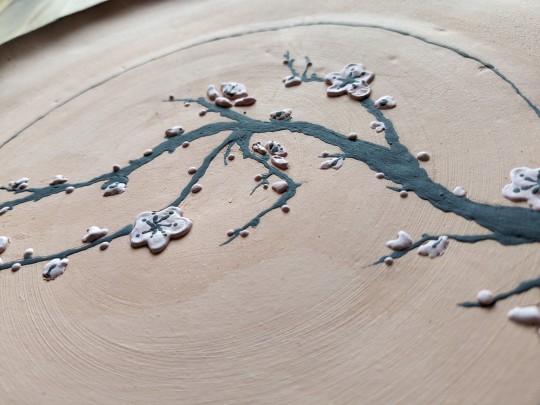


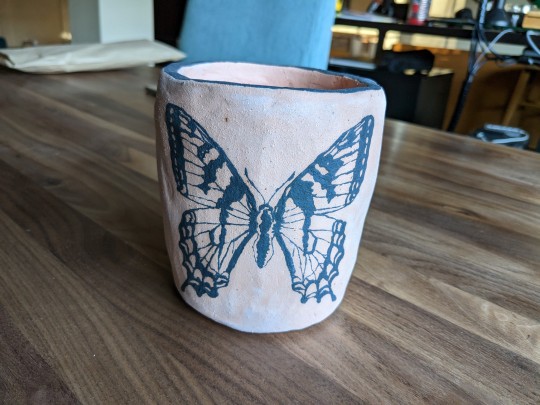

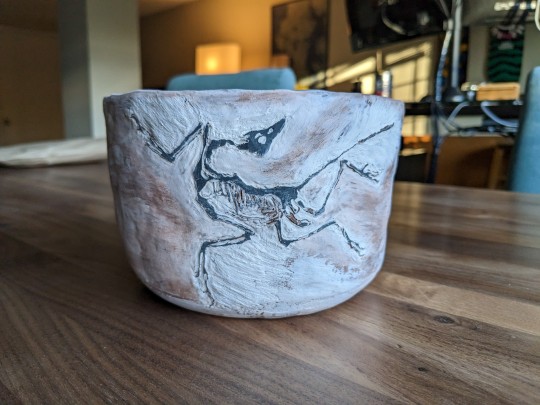

New batch of bisque fired children, ready for glazing before final firing. I'm really enjoying working with this new clay, called Fool's Gold, that when fired to cone 6 will be a speckly golden color with tiny black flecks. Bisque fired it looks kinda pink!
#fossils#dinosaur#paleoart#archaeopteryx#salamander#lizard#it's a fossil from the Green River Basin and I have the details on my laptop lol#quince#ikebana#flowering quince#eastern tiger swallowtail butterfly#butterfly#ceramics#pottery#flower pots#wip#jurassicqueer original post#my art#artists on tumblr
108 notes
·
View notes
Text
au idea except i’m not a writer so i’ll just put this out there: sirius is a mixed media artist in school looking to expand his variety in mediums and goes to a pottery/ceramics class and BOOM. hot remus pottery instructor
like- i feel like there’s so many possibilities with this idea. remus is obviously very nicely toned with his ability to handle large amounts of very heavy clay and sirius just cannot stay concentrated becuase those HANDS and he’s got some clay smudged on his cheek and sirius just wants to lick it and-
i have so much to say
#there’s something about pottery men that just does it for me because like#that medium requires you to be strong but also gentle and careful and attentive to detail#and i feel like remus would fit that role PERFECTLY#and sirius thinks he’s perfected all the forms of art but then there’s remus and doesn’t he just completely trump any other art#i also think it’s funny to imagine that sirius would struggle with the class sm#not becuase he’s not talented or anything but he KEEPS getting distracted#and so their pots just keep r a n d o m l y wobbling and crumbling on the wheel#txt#marauders#sirius black#remus lupin#wolfstar#marauders au
35 notes
·
View notes
Text
Okay I’m so sorry I won’t draw god au garroth because I can’t draw beards for shit and dudes basically naked anyways.
Here’s some of his lore tho lmao:
(Under the cut because this is a long post)
Garroth is one of the original deities to have been worshipped by the followers. The followers first knew of the ground, and then of lakes and rivers, before they knew the oceans and seas- his domain. As such, his father is god of all land, every inch of ground down to the planets core is his domain, Zianna is god of rivers and lakes, and Garroth is god of oceans and seas.
The separation of rivers and lakes from oceans and seas seems unneeded to outside observers, but where rivers and lakes were small, and the water often (though not always) salt-less, the oceans and seas were seemingly endless, and ridden with salt. They believed that the salt of the earth met the water of the river and the salt caused it to grow, and amass a strength that exceeded the mother - and as such Garroth was born, which is also an explanation for why some rivers were salty too.
Garroth often adorns himself in gems, pearls and sea glass, with hair the pale yellow of sea foam, eyes the blue-green of the water, and skin the tan of the sand.
He is known to be a benevolent god, bestowing upon humanity fish to eat, and land upon which to travel, but his wrath is feared. It is not often invoked, but when his pride turns to anger, men turn to corpses, ships turn to debris, and Garroth’s body, the ocean, turns into a graveyard. His flux of moods can also be attributed to the presence of another god, the moon goddess. They say that she pulls him to shores in promise of them meeting, but her domain forces her to remain in the sky, so that his efforts are fruitless. Sometimes he makes waves as tall as mountains in hope to reach the skies to see her.
He is one of the better documented gods, due to the importance of him, and is represented by many symbols that vary upon the area and branch of the religion, most noteable ones being three waved lines to represent the ocean, or simple fish sketches. In most art work, he is shows to be varying degrees of half-man, half-fish, though he ultimately always has a humanoid head (some artwork does suffer from this, fish don’t suit human faces)
Whilst there is heavy amounts of evidence for him having feelings for the moon goddess, there is too much lost about her over time for anyone to be certain it was reciprocated, or if it was anything beyond an extremely affectionate friendship.
One piece of literature, a book of poems dedicated to the gods and illustrating a colourful storyline for them, claims that he made pearls so that he may always see the moon, even during the day. For this reason, both him and the moon goddess are heavily associated with pearls.
During the entirely of The Hunt, he is mentioned a total of four (known) times, and for the rest of it he is either absent or the material stating otherwise has been lost. He seems to have sided with the followers, though as media continues to present him as being close to the moon goddess after wards, there is a chance that this changed, or that there was more to The Hunt than what has been resurfaced. Some historians believe this was simply an oversight as not many people would consider the ocean a playing factor in the Hunt aside from the events at the cliffs of O’Khasis, where he is in fact briefly mentioned.
Despite being an ocean god, he did have heavy associations with dragons and is patron god of messengers due to details in the book of Wyverns by the poet Sabbhoy that involve him and a golden wyvern who’s name roughly translates into Raven or Crow in modern languages.
#I’m a little crazy with this lore. I have so much. so many details#even names of poets who write about them and pottery makers who detailed their battles on terracotta#it gives me something to do#aphmau#aphverse#aphblr#aphmau au#aphmau god au#i feel like I should name this au I just don’t know what
17 notes
·
View notes
Text
part 1 of my model of dave striders room out of clay <3 next is glaze whenever i finish that LOL


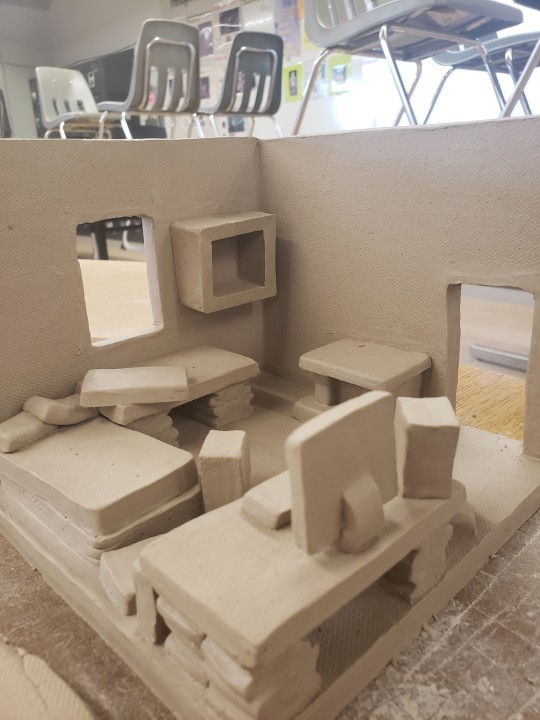
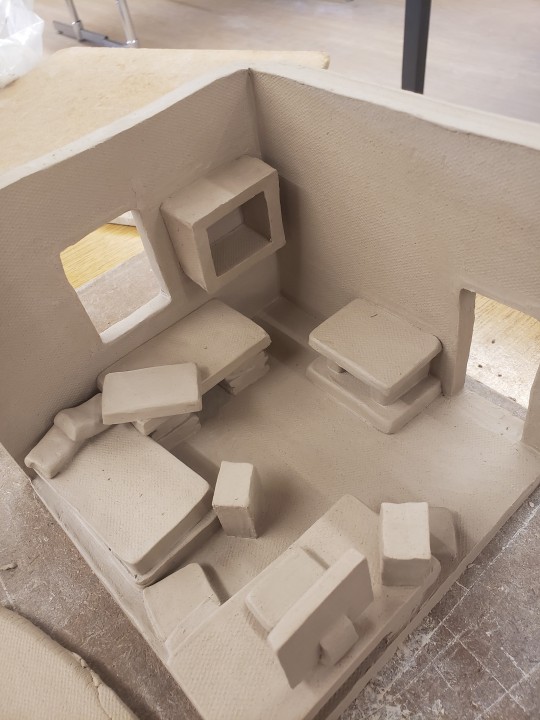
#dave strider#homestuck#clay#pottery#clay art#room replica#daves room#homestuck art#i wouldve done dirks but his is like 100x more complicated#yes many small details are missing i only have so much wet clay time left in class
26 notes
·
View notes
Text
hello once again, your friendly neighborhood spaniard is here once again to comment on the references to spanish culture i'm seeing while playing scarlet and violet!
here's my previous post on this! and i wanted to tell you that as per this post, i've officially seen all the cities and towns in paldea which means there's not really much else to explore, these posts are coming to an end :(
anyways, let's start
if montenevera is based on the pyreenees, it makes sense that the area around the fairy squad camp is modeled around another part of northern spain, in this case asturias and more precisely the picos de europa national park, arguably the prettiest part of the country (i've never been there but everyone that has been says asturias is the prettiest so who am i to disagree). just like in the game, it's a beautiful prairie place next to big scary mountains and right by the sea! however, there are no marshy areas in asturias; the three largest ones in the country are the ebro delta [pic 6], the valència albufera [pic 7], and doñana national park [pic 8]. i would say the in-game one is probably referencing the ebro delta, only based on location, as the other two are more south.






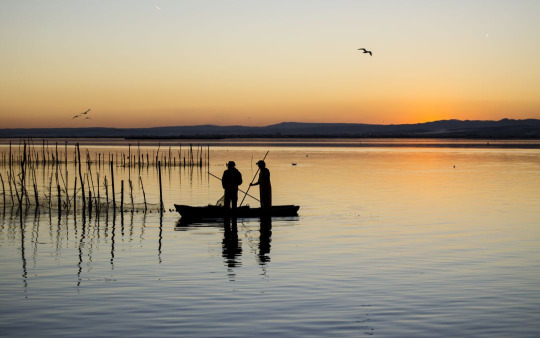

another fun thing about this area is that if you go swimming in the north coast you'll be able to find the tynamo evolution family, based on lampreys! lampreys have been fished in galicia as early as the roman times, with unique rock constructions built in the rivers called pesqueiras used to specifically catch them. they are part of the traditional galician (and portuguese!) cuisine, and they are similar to anchovies, one of the most popular dishes in another northern iberian area, cantabria.




finally, there's the last town of the game that i had yet to see, alfornada! one fun fact about me is that my favourite architectural style is mudéjar, so i was absolutely stoked to see a whole town built in that style!!! for everyone who doesn't know what mudéjar is, or why arabic-inspired music sounds all throughout the town, i'm gonna summarize 700 years of story really quick: after the western roman empire fell, the visigoths took over the peninsula, and things were chill for a bit until 711, when the moors invaded the peninsula. by 722 all but asturias was now part of the umayyad caliphate (we call moorish iberia al-andalus for short), but the asturians defeated the moors in the battle of covadonga and from there on the reconquista started, a centuries old war between christians and muslims in iberia that lasted until 1492, when the last remnants of al-andalus were defeated. as you could imagine this conjured up a very complex social landscape and a unique cultural makeup that still lasts till this day. within all of that, there were three groups we had to study in class and were a pain in the ass to differenciate (i had to search what each one were for this post): muladíes (local iberians that converted to islam and lived in al-ándalus), mozárabes (christians and jews that lived in al-ándalus), and mudéjares (muslims living in the iberian christian kingdoms). mozárabes and mudéjares had to pay extra taxes and live in special quarters of the cities, but apart from that they all lived peacefully which is neat. both groups had their own art styles, but the mudéjar art and architecture was the most prominent of the two, and even experienced a renaissance in the 19th and 20th centuries with the neo-mudéjar style. it basically mixes muslim and christian styles and it's so good i love it with all my heart.
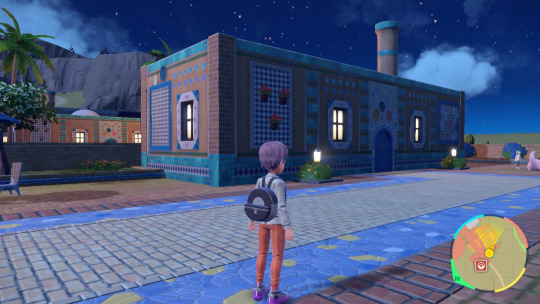
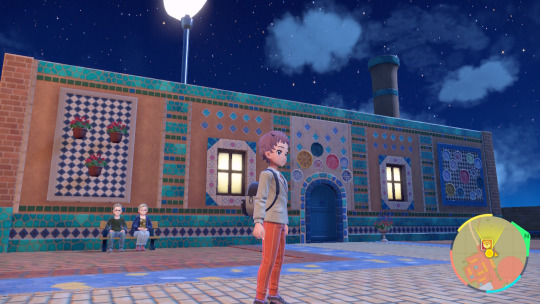


also, alfornada is known for its pottery, and ceramics are one of the traditional spanish arts, there are still a lot of ceramic workshops in rural areas where you can find handmade ceramic. and the plates displayed in alfornada are also very popular in the country, every grandma has at least one set very similar to the ones in the game lol. one particular place associated with this type of ceramic is talavera de la reina, in toledo. as our ex-president once said 'the talavera pottery is a big thing, in other words, it is not' a small thing' (it doesn't make sense in spanish either <3)

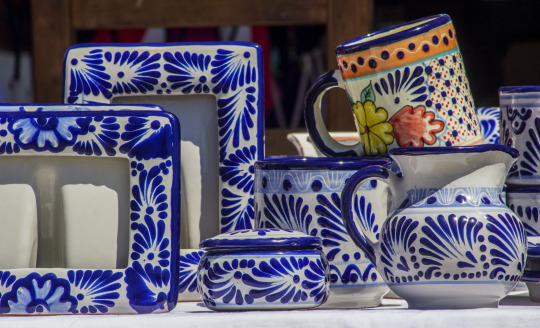


you thought i was done with this town huh? surely there isn't any more references right??? right??? well, we're just getting started. another interesting feature of alfornada is all the fountains in the streets, which, alongside with the music and the mudéjar style, made me realise what was the biggest inspiration behind this town: the alhambra, the palace complex of the kings of the nasrid kingdom of granada, the last stronghold of al-andalus and imo the most incredible human construction ever (it's a unesco world heritage site as well). even the setting of alfornada corroborates this; the alhambra sits on the top of a mountain, right by the sierra nevada mountain range, one of the tallest of the country (in fact, the highest peak in iberia, the mulhacén, is located there). one of the main defining features of the alhambra was the usage of water, with tons of canalization through the complex and lots of gorgeous fountains.


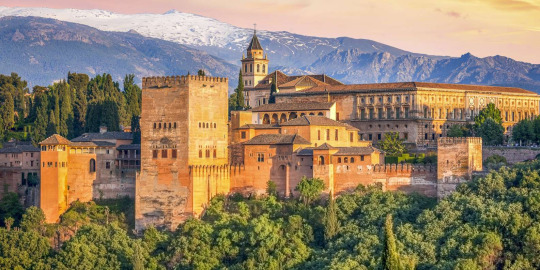


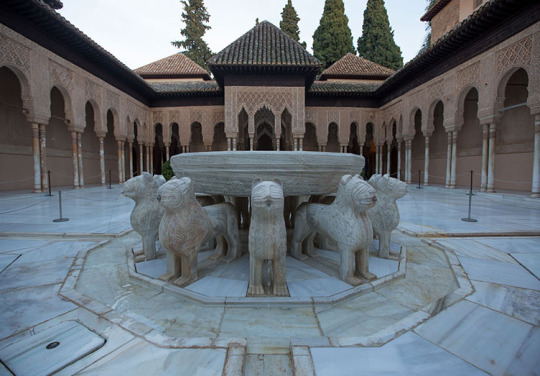
we're almost done, hold up (this is the first post where i had to cut some images cause i had reached the 30 pic limit oops). just north to alfornada, if you continue to climb up the mountain, you'll reach a ruins area. there are tons of these in paldea, and it makes sense, there's a ton of ruins everywhere in spain as well, but these are special due to its location, its context, and the arch and colums that can clearly be seen. i'm pretty sure this is a direct reference to medina azahara, the palace complex of the caliphate of córdoba, that now lies in ruins (another world heritage site). i visibly gasped when i got here, it shows how much thought the pokemon company put into this game :)
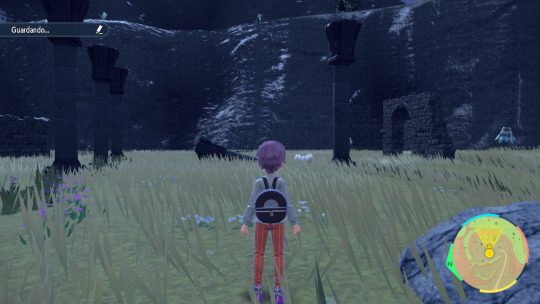

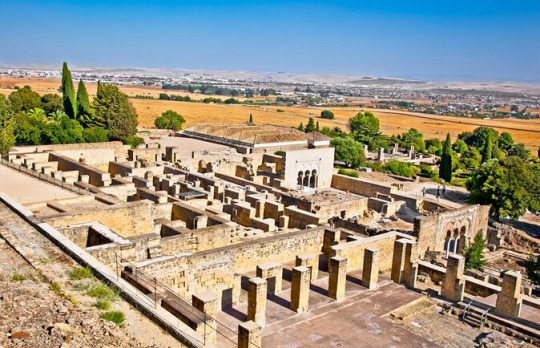

and that was all! i hope you liked it :)
here's next post !!!
#pokemon#pokemon scarlet and violet#pokemon sv#pokemon spoilers#pokemon sv spoilers#yeah i love alfornada :)#also like#the name#-ada as in granada#and in spanish the town is alforno town#al- is the arabic article that can be found in tons of spanish words#like alfar (pottery factory / workshop / atelier?)#and forno is just the old spanish way of writing horno (oven / furnace)#so yeah#probably the most detailed city in the region
39 notes
·
View notes
Text

Cypriot horse
* archaic period
* Medelhavsmuseet, Stockholm
Stockholm, November 2023
#Cyprus#ancient#art#pottery#vase#detail#animal#horse#archaic#eye#Swedish Museums#This still makes me smile#my photo#Medelhavsmuseet
60 notes
·
View notes
